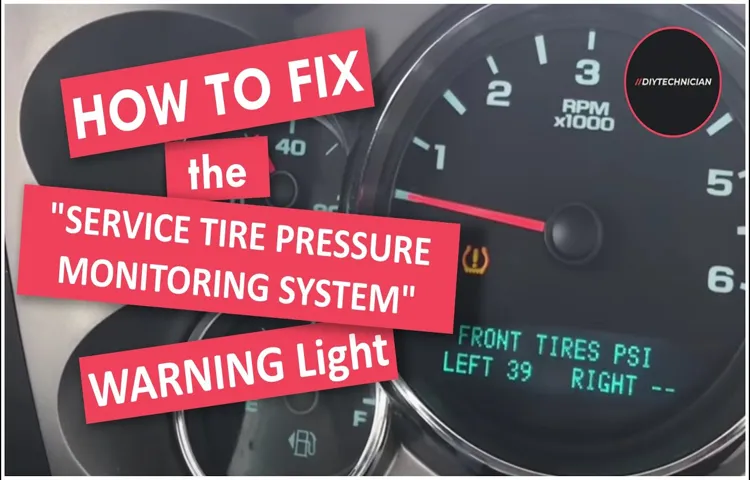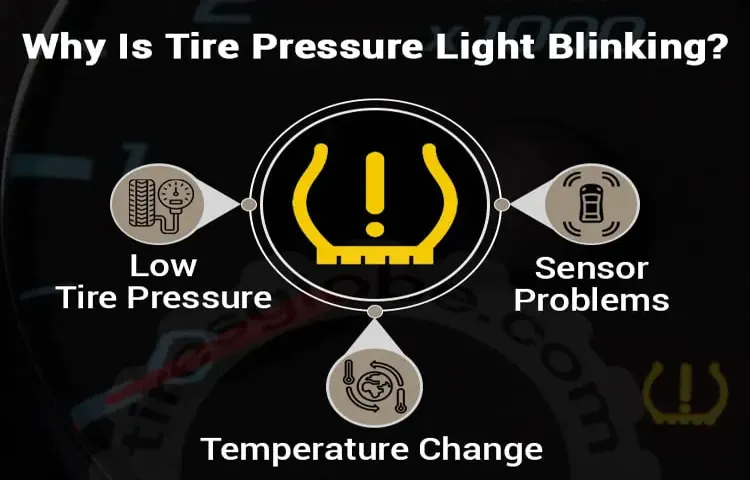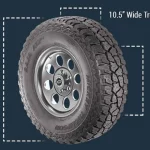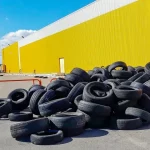Have you ever been driving along the highway, minding your own business, only to have your tire maintenance light pop on unexpectedly? It can be a confusing and stressful situation, especially if you’re not sure what the light means or what action you should take next. Well, don’t fret! In this blog post, we’re going to explore the meaning behind the tire maintenance light and what steps you can take to ensure your safety on the road. Whether you’re a seasoned driver or a new one, understanding the importance of tire maintenance is crucial for your safety.
Think about it like this: your tires are the foundation of your vehicle. Without them, you’re not going anywhere. Keeping them in good condition is essential not only for handling and performance but also for preventing accidents on the road.
And that’s where the tire maintenance light comes in. So, buckle up and keep reading to learn more about what the tire maintenance light means, why it’s essential to pay attention to it, and how you can keep your tires in top shape. Let’s hit the road!
Table of Contents
What is a Tire Maintenance Light?
When your tire maintenance light comes on, it’s easy to panic and wonder what’s going on. This warning light appears on your dashboard to alert you when there’s an issue with your tires. This could be due to a variety of factors, such as low tire pressure, a puncture or tear, or malfunctioning tire sensors.
It’s important to address the problem as soon as possible, as driving on underinflated or damaged tires can be dangerous and lead to blowouts. Make sure to check your tire pressure and look for any visible damage to your tires. If you can’t find the issue yourself, it might be time to schedule an appointment with a mechanic.
By taking care of your tires and addressing any issues promptly, you can help ensure your safety on the road.
Definition
A tire maintenance light is a warning indicator in your car that signals when something is not right with your tires. This light might come on due to low tire pressure, a punctured tire, or other factors that impact the performance of your car’s tires. When the tire maintenance light illuminates, it’s crucial to take action right away.
Ignoring this warning can lead to serious consequences, including tire blowouts, accidents, and other safety hazards. By fixing the problem that triggered the tire maintenance light, you can ensure that your car is in tip-top shape and ready for the road. So, if you want to stay safe while driving, pay attention to your tire maintenance light and take it seriously.

Purpose
The purpose of a tire maintenance light is to alert drivers when there is an issue with their vehicle’s tires. This light is triggered by sensors in the tires that monitor air pressure, tread wear, and other factors that can impact tire performance. When the light comes on, it is important to take action as soon as possible to prevent further damage or potential accidents.
Ignoring the light could lead to a flat tire, blowout, or other safety hazards on the road. By quickly addressing any issues flagged by the tire maintenance light, drivers can ensure that their vehicle is operating safely and efficiently. Regular maintenance, including tire rotations and replacements as needed, can also help prevent issues from arising in the first place.
Remember, your tires are your car’s only contact point with the road – keeping them in good condition is essential for staying safe on the road.
Reasons Behind Tire Maintenance Light Coming On
When the tire maintenance light comes on, it can be a cause for concern and confusion for many drivers. There may be several reasons behind this notification, from low tire pressure to other mechanical issues. Generally, this light is triggered by the tire pressure monitoring system (TPMS) when the pressure in a tire drops below the recommended level.
However, it can also indicate a puncture or damage to the tire, or even an electrical problem with the TPMS. It’s crucial to address the issue as soon as possible to avoid potential accidents or damage to your vehicle. Ignoring the tire light notification can lead to further issues and costly repairs in the future.
So, if you see your tire maintenance light come on, make sure to check your tire pressure and inspect your tires for any damage or punctures.
Low Tire Pressure
Low tire pressure can cause the tire maintenance light to come on in your car dashboard. Several factors can contribute to low tire pressure, including extreme temperature fluctuations, punctured tires, and worn-out valve stems. Having low tire pressure can result in decreased fuel efficiency, uneven tire wear, reduced handling, and can even lead to tire failure.
Regular tire maintenance, including checking the tire pressure and filling it to the recommended level, is crucial to ensure your car’s safety and performance. If you notice the tire maintenance light come on, it’s essential to check your tires’ pressure immediately. Driving with low tire pressure can result in costly repairs, decreased safety, and even accidents.
Avoid these risks by keeping up with regular tire maintenance. Your car, wallet, and safety will thank you!
Tire Pressure Sensor Issue
Have you ever been driving down the road and suddenly the tire maintenance light comes on? You might be wondering what caused the sudden alert, and one common reason could be the tire pressure sensor. These sensors are designed to monitor the air pressure in your tires and send alerts to your dashboard when it drops below a certain level. This is an important safety feature, as low tire pressure can negatively impact your vehicle’s handling and fuel efficiency.
However, there are several reasons why the tire pressure sensor might come on, including changes in temperature, punctured tires, or faulty sensors. If you notice the alert, it’s important to check your tire pressure and address any issues to ensure your safety on the road.
Tire Rotation Needed
If you’re driving your car and see a tire maintenance light come on, it’s natural to feel a little concerned. In most cases, the light is indicating that your tires need a rotation. Rotating your tires involves moving them from one position to another to ensure even wear and extend their lifespan.
The reason for this is that driving causes the front and rear tires to undergo different loads and friction. By rotating them, the tires get a chance to distribute wear evenly. This, in turn, makes your vehicle safer to drive by reducing the likelihood of a blowout or flat tire.
So, next time you see the tire maintenance light come on, it’s essential to take your car to a professional mechanic to have the tires rotated. This simple step can go a long way in maintaining your vehicle’s health and keeping you safe on the road.
Wheel Alignment Issue
Wheel alignment is a crucial aspect of vehicle maintenance that is often overlooked by car owners. It is important to keep your tires aligned properly to ensure that you can drive safely and extend the lifespan of your tires. One of the most common reasons behind the tire maintenance light coming on is a wheel alignment issue.
When your wheels are not aligned properly, it can cause uneven wear on your tires and affect your handling and steering. This can also lead to decreased fuel efficiency, as your car may have to work harder to maintain its speed. To avoid tire maintenance issues, it is important to have your wheels aligned regularly by a professional.
This will not only save you money in the long run, but it will also keep you and your passengers safe on the road.
Tire Damage
Tire damage is a common issue that drivers face and one of the warning signs of tire damage is the maintenance light coming on in a vehicle. This warning light is a signal that there may be a deficiency in the tire’s inflation pressure or a sensor failure. There are several reasons why the maintenance light comes on, including underinflation, overinflation, punctures, worn-out tires, and general wear and tear.
Underinflation can lead to tire wear, lower fuel mileage, and poor vehicle handling, while overinflation can cause premature wear in the center of the tire and impact vehicle handling. Punctures can cause a slow leak, leading to underinflation, while worn-out tires become inefficient and are more prone to punctures and blowouts. Regular tire maintenance, including checking the tire pressure and regularly inspecting the tires, can prevent these issues and ensure tire safety.
So, it’s essential to pay close attention to your vehicle’s tire maintenance light and get your tires checked if it comes on.
How to Respond When Your Tire Maintenance Light Comes On
Have you ever experienced the tire maintenance light coming on in your car? It can be a bit alarming if you’re not sure what it means. Essentially, the tire maintenance light is an indicator that there may be an issue with your tires. It could mean a few different things – low tire pressure, a flat tire, or even just a faulty sensor.
The best thing to do when this light comes on is to check your tire pressure as soon as possible. If the pressure is low, fill your tires up to the recommended PSI. If there are no obvious issues with your tires, it may be time to take your car in to a mechanic to have them take a closer look.
Remember, keeping your tires in good condition is crucial for both your safety and the lifespan of your vehicle.
Check Tire Pressure and Inflate if Necessary
When you see your tire maintenance light come on, it’s important to not ignore it and take action immediately. One of the first things you should do is check your tire pressure. Low tire pressure is a common cause of tire issues, such as blowouts, and can even increase your risk of getting into an accident.
To check your tire pressure, you can use a tire pressure gauge or visit a gas station that has a machine to check it for you. Once you know the pressure, compare it to the recommended pressure listed in your vehicle’s manual or on the inside of your driver’s side door. If it is low, inflate it to the correct pressure using an air compressor or by using a tire inflator.
By keeping your tire pressure at the recommended level, you can help extend the life of your tires and improve your vehicle’s overall performance. Remember, regular tire maintenance can save you money and keep you safe on the road.
Inspect Tires for Damage
When your tire maintenance light comes on, it’s essential to figure out why. One possible cause could be damage to your tires. It’s essential to inspect them for harm regularly.
Look for any cuts, punctures, or bulges that could cause your tires to fail. Even if they appear small, any damage could worsen over time, so it’s best to replace them as soon as possible. If you’re unsure whether the damage is severe enough to warrant replacement, take your vehicle to a qualified mechanic and ask their professional opinion.
Remember, tires are your vehicle’s only contact with the road, so it’s critical to keep them in good condition. By regularly inspecting them for damage, you could avoid an accident and potential injury. Keep in mind, regular tire maintenance is key to keeping you and your passengers safe on the road.
So don’t ignore your tire maintenance light, take action immediately and ensure your safety.
Rotate Tires
If your tire maintenance light comes on, it could be a sign that it’s time to rotate your tires. Tire rotation is essential to ensure even wear on all four tires and prolonging their lifespan. It’s recommended to rotate your tires every 5,000 to 7,500 miles, depending on your vehicle and driving conditions.
If neglected, uneven tire wear can lead to poor handling, reduced fuel economy, and even a blowout. So how do you respond when your tire maintenance light comes on? Take your car to a trusted mechanic and have them check your tires’ condition. They can advise on whether tire rotation is necessary, and if so, the right tire rotation pattern for your vehicle.
Regular tire maintenance is vital for the safe operation of your car, so don’t ignore your tire maintenance light. Remember, rotating your tires is like evenly wearing a pair of shoes – it’ll make them last longer and perform better.
Take Car for Wheel Alignment
If you see the tire maintenance light come on in your vehicle, don’t panic. It’s a common alert that can indicate a range of issues, but one of the most frequent reasons is that your car needs a wheel alignment. A misaligned wheel can result in uneven wear and tear on your tires, which can ultimately lead to premature failure and a host of other expensive problems.
When you take your car in for a wheel alignment, a technician will adjust the camber, caster, and toe angles to ensure that your wheels are aligned with each other and perpendicular to the ground. This will allow your tires to make consistent contact with the road, resulting in better handling, improved fuel efficiency, and a smoother ride. So if your tire maintenance light comes on, don’t wait – take your car in for a wheel alignment to protect your tires and keep your car running smoothly.
When to Schedule a Professional Tire Inspection
If you see the tire maintenance light come on in your vehicle, it could mean a few things. It could be a simple reminder that it’s time for routine maintenance, such as rotation or pressure checks. However, it could also indicate a more serious issue with your tires, such as uneven wear or a problem with the alignment.
To be safe, it’s a good idea to schedule a professional tire inspection as soon as possible to diagnose any potential issues before they become bigger problems. A professional inspection can help ensure the safety and longevity of your tires, saving you both time and money in the long run. So if you’re ever in doubt about the condition of your tires, don’t hesitate to have them checked out by a certified technician.
If Tire Maintenance Light Persists After Responding
If your tire maintenance light persists even after you’ve responded to it, it may be time to schedule a professional tire inspection. This could be a sign of a more serious problem that needs to be addressed by a trained technician. While ignoring the light may be tempting, it’s important to address any potential issues with your tires as soon as possible to ensure your safety on the road.
A professional inspection can help identify any underlying issues and provide recommendations for the best course of action. Remember, your tires are one of the most important safety features on your vehicle, so it’s crucial to take proper care of them. By keeping up with regular maintenance and addressing any warning signals promptly, you can help guarantee a smooth and safe driving experience.
So don’t hesitate to schedule an inspection if you’re experiencing any issues with your tires, and drive with confidence knowing that you’re taking proactive steps to keep your vehicle in top condition.
After Tire Replacement
After getting new tires installed, it’s important to keep a close eye on their performance. Although professionals usually recommend getting an inspection every six months, you should have your tires checked if you notice any strange vibrations, wobbles, or noises. These signs could indicate that your tires aren’t balanced or aligned correctly or that there may be damage that needs to be addressed.
A thorough inspection by a trained professional can help ensure that your tires are in top condition, giving you peace of mind and helping you avoid potential accidents on the road. With the right care and maintenance, your tires can last for years to come, keeping you safe and comfortable on your daily drives. So, if you’ve just had new tires installed, don’t hesitate to schedule a professional inspection to ensure they’re performing at their best.
After Car Accident or Collision
When you’re involved in a car accident or collision, it’s important to inspect your tires for any damages. Even if your tires look fine, there could be underlying issues that could lead to larger problems down the road. It’s always best to schedule a professional tire inspection to ensure your safety and the safety of others on the road.
A trained professional will be able to identify any potential problems and make recommendations on whether you need to replace your tires. It’s also important to note that tire damage isn’t always visible to the naked eye, as some damages can occur internally. By scheduling a tire inspection, you’ll have peace of mind knowing that your vehicle is safe to operate and won’t pose a risk to yourself or others on the road.
Don’t take chances when it comes to your safety – schedule a tire inspection as soon as possible after an accident or collision.
Every 6-12 months for Preventative Maintenance
It’s essential to prioritize regular tire inspections to maintain their longevity and ensure safety on the road. So, when should you schedule a professional tire inspection? Typically, every 6-12 months is the optimal time interval for preventative maintenance. However, it’s worth noting that weather conditions, the type of vehicle and driving habits, and other external factors may require more frequent inspections.
A professional routine tire checkup includes examining the tire tread depth, sidelines, and inflation levels to identify any signs of wear and tear and address issues promptly. Neglecting to maintain tire health could result in decreased fuel efficiency, difficult handling, and even potential accidents. Therefore, it’s crucial to consider booking a tire inspection with a professional mechanic regularly.
It’s a small investment that ensures peace of mind and safeguards your vehicle’s longevity and your safety on the road. So, don’t delay, make that appointment today!
Conclusion: Taking Care of Your Tires for Optimal Performance and Safety
In short, when your tire maintenance light illuminates, it’s your car’s way of saying, “Hey there, friend! Your tires need a little TLC.” Whether it’s a simple case of low air pressure or a more complicated issue, it’s important to take heed of this warning and give your tires the attention they deserve. After all, just like a good pair of shoes, your tires keep you moving safely and comfortably down the road.
So, next time you see that little symbol light up, remember: good tire maintenance is no joke — pun intended!”
FAQs
What causes the tire maintenance light to come on?
The tire maintenance light can come on due to various reasons such as low tire pressure, a punctured tire, or a malfunctioning tire sensor.
Can the tire maintenance light be reset by the driver?
In some cases, the driver can reset the tire maintenance light by following the instructions in the vehicle owner’s manual. However, if the light keeps coming back on, it may indicate a more serious issue that requires professional attention.
How often should I check my tire pressure to prevent the tire maintenance light from coming on?
It is recommended to check tire pressure at least once a month, and more frequently during extreme temperature changes or if you frequently drive on rough roads.
What should I do if the tire maintenance light comes on while driving?
If the tire maintenance light comes on while driving, check the tire pressure as soon as possible and inflate the tires to the recommended level. If the light remains on, have your vehicle inspected by a professional mechanic.
Can the tire maintenance light indicate other mechanical problems with my vehicle?
While the tire maintenance light is typically related to tire issues, it can also indicate other mechanical problems such as a faulty wheel speed sensor or a malfunctioning ABS system.
Will driving on underinflated tires damage my vehicle?
Yes, driving on underinflated tires can cause damage to your vehicle’s suspension, increase fuel consumption, and reduce tire lifespan. It can also be a safety hazard, as it impacts vehicle handling and increases the risk of a tire blowout.
How can I prevent the tire maintenance light from coming on?
Regular tire maintenance, including checking tire pressure, rotating tires, and inspecting tires for wear and tear, can help prevent the tire maintenance light from coming on. Additionally, avoiding rough roads and extreme temperature changes can also help maintain proper tire pressure.



